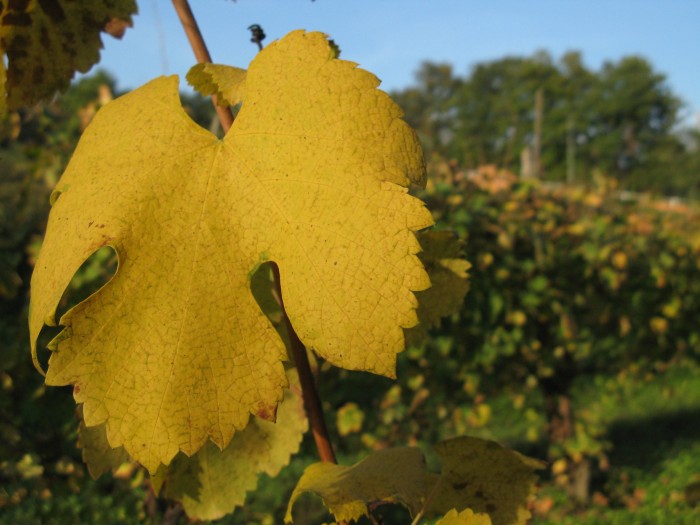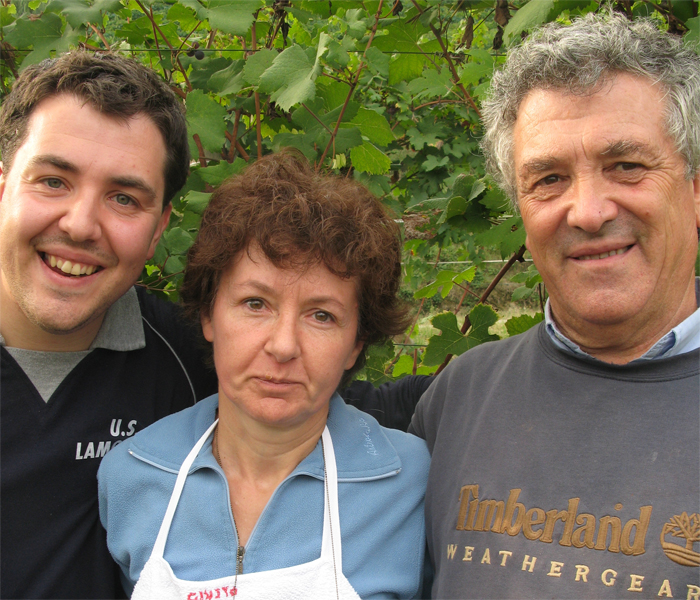Italian vintage 2013 reports from Tuscany, Emilia-Romagna, Puglia and Piedmont
Author: David Berry Green
Saverio Petrilli, winemaker at the Lucchesi estate of Tenuta di Valgiano records that they experienced a difficult spring, due to it having rained from Oct ’12 until June ’13. “We thought 2010 had been tricky, but Nature knows no limits nowadays. We worked like dogs to limit the spread of downey mildew and botrytis attacks, unseen of in spring. Then, from 18 June, torrid heat, reducing the clay to terracotta! Still humid, Nature threw oidium at us too, to complete the set! Biodynamic preparation 501 (crushed quartz) pepped up the weak vegetative growth during the cool spring weather. The harvest started on 5 September, slow and easy. Then storms, more rain and it became frenetic! In under a month we harvested everything, filling every available vessels, even the bath! Quantity was stable, if 5 percent down. The quality was good, similar to that of the 1990s, with modest alcohol (12-13 percent), high acidity and low pH. We need to wait until after the malolactic before judging. For now, the wines are fruity, vivaci, almost nervy, with great energy.”
Giovannella Fugazza at her Emilia-Romagnan estate, Castello di Luzzano writes: “I would define this (2013) harvest as ‘Harking back to the harvests of yesteryear’. Both for the fact that maturation was later than in previous years and that the weather stressed us during the final weeks – all in all, echoing vintages of the 1990s. It wasn’t an easy harvest, but one that has given birth to wines, rich in perfume, colour and with a good alcohol level. The maturation of the fruit was, in fact, helped by a summer’s end characterised by cool nights, and hot, ventilated days. We started harvesting on 10September, first with the Pinot Noir destined for white wine vinification, then, in order: Chardonnay, Malvasia Candida Aromatica, Syrah, Pinot Noir (for reds), merlot, Bonarda, Barbera and then at the end Cabernet. Quantity was down, especially in white grapes and in Pinot Noir, almost 25 percent less. This is due to the wet spring (during flowering). In all we‘re satisfied, achieving on average 70hl/hectare (from 75ha) at an alcohol level of 12.5 percent.”
Paolo Benegiamo at his Salento propriety L’Astore Masseria in the Puglian heel of Italy, dividing the Adriatic and Ionian seas writes: “2013 was notable for its even weather, characterised by a mild winter and fresh spring. Rainfall of 630mm between 1October 2012 and 31 July 2013 was on average for the past 10 years. The fresh spring delayed budding and flowering. Clipping the tops of rows in June brought on new leaves, giving a push to the maturation process. July witnessed good day/night temperature excursions. Compared with 2012, this year’s been less productive and slightly later than previous vintages, resulting in a later, strung on harvest that allowed the gradual development of aromas in the grapes. Harvest started on 16August with Susamaniello (for its sparkling Brut Rosato). Negroamaro for its Rosato ‘Massaro’ was brought in at the end of August, followed by the Malvasia Bianca for ‘Krita’. Primitivo (for ‘Jema’) and Negroamaro (for ‘Filimei’) came in during the second and third weeks of September. Old vine Negroamaro for ‘Alberelli’ was cropped at the end of September early October, followed by Aglianico.
Finally to Nicola Oberto (pictured above), whose Piedmontese family make fine Barbera, Nebbiolo (for Barolo) and Sauvignon (!) at the La Morra estate of Trediberri, new to Berry Bros this year: ‘The 2013 season marked the return to an “old-fashioned” (ie late) vegetative cycle of the vines. This was due to a very unusual spring, characterised by an extra-ordinary amount of rain (see 2013 rainfall chart on trediberri.com) which brought two pivotal results: the incapability to enter rows in order to mechanically widespread copper-based treatments and the consequent rise of downy mildew (peronospora). Organic wineries (not using systemic treatments) lost 25 percent to 70 percent of buds during flowering. Huge rainfalls also caused a fall of temperatures between March and May and this undoubtedly delayed the blooming and the bud-set. Summer was on average slightly cooler than usual (characterised by hot daytimes and cool nights) and rather dry; these conditions helped veraison and first ripeness. Green-harvesting was a factor in this phase: wineries who had been less damaged by downy mildew were keen to thin, while some decided not to proceed since they looked quite low in production (20 percent to 30 percent fewer formed grapes than usual). Harvest was delayed all-over Italy and in Piedmont white grapes started to be harvested at the beginning of September, with 15-20 days of delay.
The rainfalls of late August – combined to a sunny September – caused berries and bunches to increase weight and dimensions, thus causing the crush of adjacent berries; what was expected to be a scarce harvest, in October started to appear as an abundant one (especially considering the relative weight of any single bunch) with the concrete risk of rot and bad botrytis. We had to hardly intervene in order to let the air blow through the shoots, stop the rising humidity and get rid of rotted bunches. Generally speaking, red grapes were harvested throughout October, with a constant eye on weather conditions: mid-late October rainfalls and cool temperatures brought percentages of sugar far lower than recent seasons’, sometimes with a high level of acidity and an inconsistent ripeness of tannins. In a nutshell 2013 was better than what we could forecast in May, but came as a result of a compromise between winegrowers and weather. As for our vineyards, grapes from Rocche dell’Annunziata were superb (harvested relatively early on 10 October), whereas the fruits to be blended into our straight Barolo – from the vineyards Berri and Capalot – although picked later between 18 and 27 October, were characterised by an irregular ripening pattern and needed a more accurate selection process.”





Hi David!
Loved your coverage of the Piedmont harvest last year (2013), followed videos published on youtube.com. Will you cover it this year also?
Dear Mr Finsrud,
Thank you very much for your message, David has asked me to pass on his thanks and let you know that he will again be reporting on the harvest – watch this space!
Kind regards,
Sophie